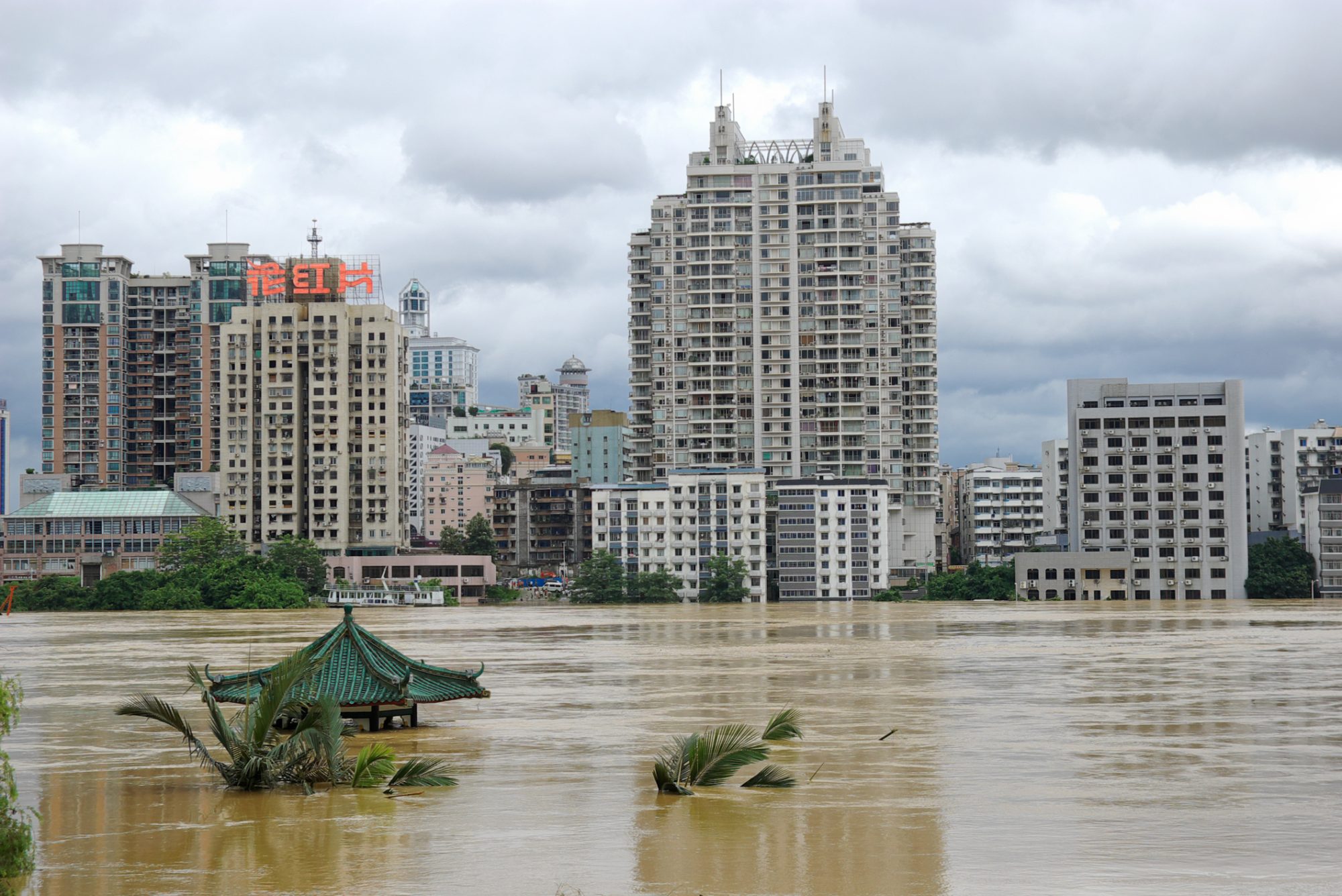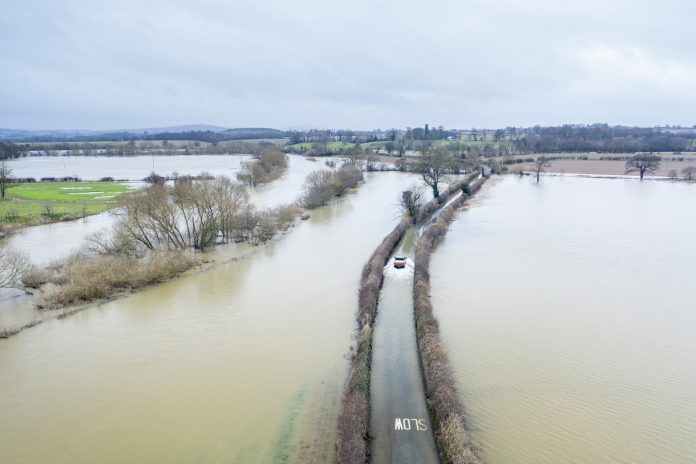Sandy Avrutin, Ocean and Earth Science Postgraduate Researcher, National Oceanography Centre at the University of Southampton, describes the uncertainty in sea-level rise, what it is & how we can use it as a tool
Sea-level rise is a major impact of climate change, threatening coastal communities, infrastructure and ecosystems. To compound the issue, a significant proportion of the UK’s population are centred around coastlines – making them vulnerable to changing seas. Because of this, it is difficult to understate the importance of being able to predict how sea levels will change in the future. Furthermore, uncertainty in sea- level rise and its lack of predictability means that it is essential to begin to reduce our emissions even if there are some gaps in our knowledge – a fact that not all policymakers are grasping.
Projecting sea-level rise
To project sea-level rise, we must understand the different processes that contribute towards it. There are processes that physically add to the volume of water in the ocean (these act to change sea-level on a global scale) and change our coastlines, which change sea level on a local scale. In the first category, we have ice melt and thermal expansion (warmer water takes up more space than colder water because it is less dense). In the second category, we have vertical land motion or erosion.
Part of being able to predict the amount of sea-level rise from these sources by a particular year is knowing what timescales they act on. For example, it takes time for extra heat to make its way from the atmosphere to the bottom of the ocean. This means that the sea-level rise we get from thermal expansion happens slowly – in fact, we haven’t yet experienced the full extent of sea-level rise we can expect from the warming we have already caused. This is termed “committed sea-level rise”: the amount of sea-level rise we can expect in the long- term from the emissions we have already released. This ‘committed sea-level rise’ is a key point in favour of rapid and significant reduction of carbon emissions, alongside solid adaptation planning.
Scientists can never fully represent sea-level rise
Policymakers need to understand that even though there is possible variation in the exact outcomes of sea-level rise, we as scientists are certain that damage will be done, and delaying the transition to zero emissions until the ‘exact’ outcomes are known could lead to catastrophic amounts of sea-level rise.
Because of the number of processes that contribute to sea-level rise, each with their own timescale, scientists can never fully represent the intricacies of interactions at play. To represent this, future sea-level rise will always be presented as a range of possibilities for a given amount of warming, rather than one single figure. For example, the most recent prediction from the IPCC is 0.63-1.01 metres of sea-level rise by the year 2100 following the highest-emission scenario, and the most optimistic prediction is 0.28-0.55m. Note that in the most optimistic case, scientists assume that warming will stabilise and eventually decrease – but sea-level rise is still predicted to continue, due to the lag in the response of sea level to warming.
This range of potential sea-level rise is referred to as ‘uncertainty’. This conveys that there is variation in the earth system that we can never fully represent in models, because it is impossible to know exactly how all the different parts of the complex earth system will interact. However, it is perhaps an unfortunate choice of phrasing because it can create the impression that we don’t understand the system or that we can’t be sure whether these predictions are correct. While scientists readily understand the phrase as simply a little room for manoeuvre (we don’t have a crystal ball, after all), politicians and policymakers like to use it as an excuse to avoid putting climate change measures at the top of their agenda. Paying upfront to avoid catastrophic (and much more expensive) damage in the future should be a no-brainer.

Confidence in projections varies
Of course, limitations to our understanding do exist. To refer to these, the IPCC reports use the term ‘confidence’ in projections. To give a simple example of how these two terms are used together: I ask a group of people to guess my friend’s exact age and their guesses range between 15 and 50. There is high uncertainty in that range (35 years), but I trust the judgement of these people as a collective and we can be quite confident that my friend’s actual age is somewhere in that range. For a more in-depth explanation on confidence and uncertainty, the IPCC issues guidance on it. The sea-level projections from the latest IPCC report are given with medium confidence, indicating that there is some disagreement between studies, or that we could use more evidence. While it is always possible that we can improve our representation and understanding, we already have enough knowledge of the system to know that predictions have meaning and point towards a realistic future.
So, the range of these predictions can absolutely be used as a tool for scaling our adaptation efforts on a local basis. Policymakers should take the opportunity to prepare for the lower end of the predictions and prioritise spending and development towards preparing for other hazards, which may be the approach favoured by areas that are not set to experience much sea-level rise. Ideally, they can prepare for the higher end of the predictions and know that this covers almost any eventuality, which is useful for low-lying, at-risk areas such as the Netherlands.
What we have no reason to do, however, is wait for a time when predictions have little to no uncertainty to them before we act to reduce emissions. Not only is this an unrealistic expectation, but while we wait, we are letting warming continue, and increasing the amount of sea-level rise we are committed to. This is a particularly pertinent point in the case for socially just climate change policies, due to the unequal amounts of sea-level rise occurring worldwide. As the effects of sea-level rise will inevitably be to affect how and where we as humans can live, it is absolutely essential that policymakers cease to wait for increased ‘certainty’ of scientific predictions, and instead work with urgency to protect those that they represent.
Case study of sea-level rise
Environmental science in the U.S. National Oceanic and Atmospheric Administration (NOAA), an agency within the U.S. Department of Commerce, in essence, makes life richer through their environmental science work. Indeed, NOAA’s work encompasses “the surface of the sun to the depths of the ocean floor” and as such, they strive to keep the public up-to-date about the changing environment. (1)
Part of NOAA’s Mission concerns predicting and understanding changes in the ocean and coasts, as well as climate plus weather. Another is to do with managing and conserving coastal and marine ecosystems plus resources. (2)
It is, therefore, interesting to note that the Office of Protected Resources, a part of NOAA, seeks to work “to conserve, protect, and recover marine species and their habitats,” we read online. For example, the Marine Mammal Conservation and Management aspect of their work concerns responsibility “for the conservation, management, and protection of whales, dolphins, porpoises, seals, and sea lions under the Marine Mammal Protection Act (MMPA).” (3,4)
Sharing the knowledge of the environment referred to earlier with others is, therefore, a key part of NOAA’s Mission: to benefit communities, businesses, communities and people’s daily lives in the United States.
References
(1) https://www.noaa.gov/about-our-agency
(2) https://www.noaa.gov/our-mission-and-vision
(3) https://www.fisheries.noaa.gov/about/office-protected-resources
(4) https://www.fisheries.noaa.gov/topic/laws-policies#marine-mammal-protection-act











